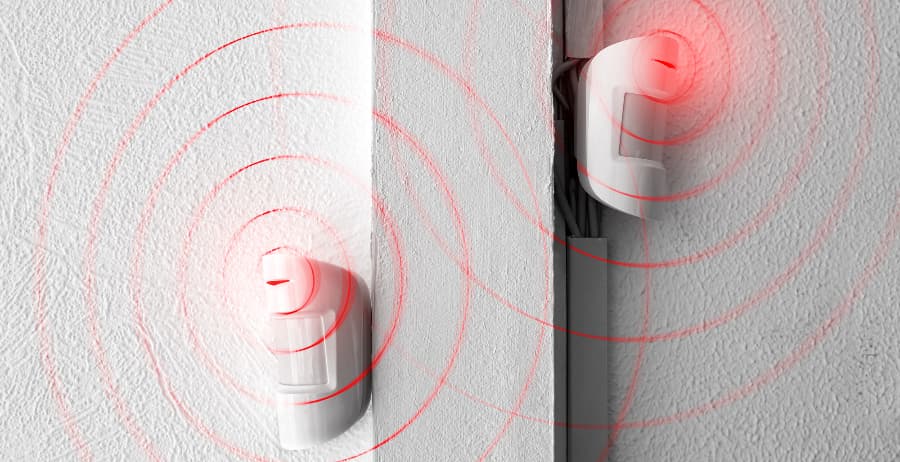How to reduce motion sensor false alarms in your Grand Rapids home

Motion sensors are essential components in a full-featured home security strategy, as they’ll let you know if an unwelcome guest is prowling around your house. Sadly, they’re also susceptible to false alarms, causing Grand Rapids homeowners to lose sleep. If you’re searching for solutions, review our suggestions for reducing motion sensor false alarms.
What triggers motion detector false alarms?
Most residential motion detectors employ passive infrared (PIR) technology to identify movement. They track changes in infrared radiation within their field of view and can determine when something is moving by its heat signature. False alarms are often caused by:
- Pets climbing on sofas or countertops
- Bursts of intense sunlight through a window
- Different heat sources, such as fireplaces and vents
- Drastic humidity or temperature changes, which cause components to be overly sensitive or non-functional
Microwave motion sensors are an additional common option that senses movement by constantly sending out and analyzing electromagnetic waves. Known as active motion detectors, they pinpoint movement due to modifications in the returning signal. Any unexpected motion, like curtains shifting when your HVAC fan turns on, can initiate an alarm.
Suggestions for reducing motion sensor false alarms at your Grand Rapids home
Beyond interrupted sleep, motion sensor false alarms are even more disruptive as they can numb you to actual threats. Moreover, recurring false alarms may become a frustration for local law enforcement and may affect future response times. Luckily, you can help circumvent them by following these recommendations:
- Inspect the sensitivity parameters of your sensors and modify to your animal’s behavior and size.
- Even if you have pet-sensitive motion sensors, it’s advisable not to point them at high-traffic areas like food dispensers.
- Avoid directing motion detectors at windows receiving intense sunlight.
- Ensure spaces are properly insulated to help prevent extreme temperature changes.
- Dust and wipe off equipment regularly to keep sensors clear.
- Check batteries and change as needed. Some devices will even let you know when batteries are running out.
- Consider a professional installation to ensure proper placement.
You may also choose hybrid devices that utilize both active and passive sensors to identify motion, leading to a higher degree of accuracy.
How should you use motion sensors in your Grand Rapids smart home?
Integrating motion sensors into a new smart home is a fantastic way to improve your convenience and safety. You’ll have the ability to do the following:
- Receive automatic notifications on your mobile device any time movement is spotted. You could also utilize them to alert you when your children get home from school.
- Have interior cameras to record any time a motion sensor trips.
- Change lighting or thermostat settings in accordance with your home’s occupancy. This functionality can help reduce utility bills.
Leading smart home motion detectors, like the ones installed by Vivint, continue to leverage artificial intelligence (AI) to better recognize real threats and decrease false alarms.
Create your Vivint smart home with reliable motion sensors
Get the top motion sensors in Grand Rapids from Vivint when you plan your comprehensive smart home. Our devices are animal-sensitive and permit you to initiate a variety of home automation actions. You’ll also benefit from the five-year battery life and immediate smartphone alerts. Reach out to (616) 747-8419 today to learn more.